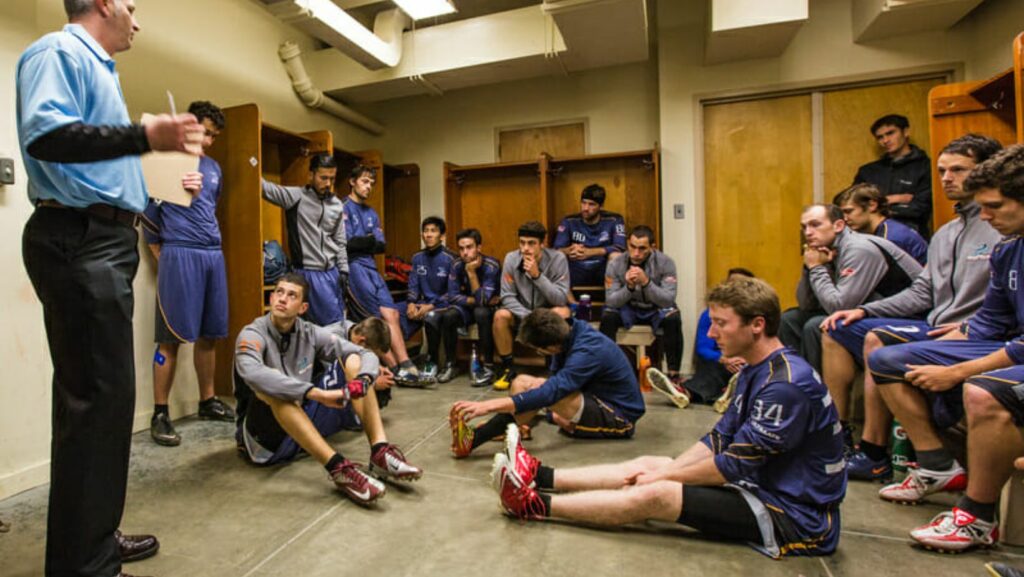Crafting an effective sports team meeting isn’t as simple as gathering everyone in a locker room. It’s an art form that requires careful planning, strategic thinking, and a clear understanding of your team’s dynamics. This article will guide you through the key steps to creating a team meeting that’s both productive and engaging. Execution of effective sports team meetings elicits a combination of exact planning and a comprehensive understanding of the team dynamics. Distinct steps, reinforced by keen strategic thinking, prove pivotal in cultivating a productive and engaging meeting.
How to Create Teams Meeting
 Execution of effective sports team meetings elicits a combination of exact planning and a comprehensive understanding of the team dynamics. Distinct steps, reinforced by keen strategic thinking, prove pivotal in cultivating a productive and engaging meeting. Meetings form the central channel for communication in team building. They offer a constructive platform for team members to share information, brainstorm on team-related issues, and forge unity. It’s in these meetings where feedback is given, accomplishments celebrated, and team strategies laid out. As an illustrative example, a football coach might use a team meeting to detail game strategies and to highlight each player’s role in the execution of said strategies.
Execution of effective sports team meetings elicits a combination of exact planning and a comprehensive understanding of the team dynamics. Distinct steps, reinforced by keen strategic thinking, prove pivotal in cultivating a productive and engaging meeting. Meetings form the central channel for communication in team building. They offer a constructive platform for team members to share information, brainstorm on team-related issues, and forge unity. It’s in these meetings where feedback is given, accomplishments celebrated, and team strategies laid out. As an illustrative example, a football coach might use a team meeting to detail game strategies and to highlight each player’s role in the execution of said strategies.
Setting Goals for Sports Team Meetings
Goals in sports team meetings act as the north star. They keep the meeting focused and ensure every discussion contributes towards the overall team objective. For instance, a basketball team’s meeting goal might be to increase their rebounding advantage in their upcoming games. Therefore, discussions during the meeting must revolve around enhancing the team’s rebounding competency and outlining the tactical adjustments required. Merely brainstorming on how to increase scoring margins without touching on rebounding won’t align with this specific goal. Foundations of effective goals lie in their clarity, specificity, and direct relevance to the team’s overall objectives.
team objective. For instance, a basketball team’s meeting goal might be to increase their rebounding advantage in their upcoming games. Therefore, discussions during the meeting must revolve around enhancing the team’s rebounding competency and outlining the tactical adjustments required. Merely brainstorming on how to increase scoring margins without touching on rebounding won’t align with this specific goal. Foundations of effective goals lie in their clarity, specificity, and direct relevance to the team’s overall objectives.
Planning the Sport Teams Meeting
 In planning sports team meetings, attention to particulars like time, location, and agenda matters. The choices made in these respects can significantly affect the meeting’s productivity and effectiveness. Selecting an appropriate time and place for the meeting is critical. It’s advisable to choose a time when team members generally aren’t preoccupied with other commitments. This could be, for instance, in the late afternoon when practices and most individual tasks are wrapped up. As for the location, the preference is for a quiet, comfortable space where discussions can be held without interruptions. Examples of such locations could be a private room at the sports facility or even a virtual platform, given the rising popularity and convenience of online meetings.
In planning sports team meetings, attention to particulars like time, location, and agenda matters. The choices made in these respects can significantly affect the meeting’s productivity and effectiveness. Selecting an appropriate time and place for the meeting is critical. It’s advisable to choose a time when team members generally aren’t preoccupied with other commitments. This could be, for instance, in the late afternoon when practices and most individual tasks are wrapped up. As for the location, the preference is for a quiet, comfortable space where discussions can be held without interruptions. Examples of such locations could be a private room at the sports facility or even a virtual platform, given the rising popularity and convenience of online meetings.
Preparing the Agenda
The meeting’s agenda deserves meticulous preparation. The agenda articulates exactly what discussions will take place during the meeting, keeping everyone focused and on track. It ought to include items directly related to the team’s goals, such as performance reviews, strategy discussions, and future planning. The agenda should be circulated to the team members ahead of time, offering them the chance to adequately prepare for the discussions. This preparation includes, for example, reviewing and making notes on pertinent documents, which promotes fruitful and well-informed conversation during the meeting.
Executing the Meeting Effectively
So, you’ve seen how to plan your sports team meeting. Now, it’s time to put that plan into action. Remember, it’s all about fostering communication, unity, and strategic thinking. The right time, a conducive location, and a well-prepared agenda are your best allies. The agenda should be circulated to the team members ahead of time, offering them the chance to adequately prepare for the discussions. They’ll keep your team focused and make your meeting more productive. It’s not just about talking – it’s about building a team and developing a winning strategy. And that’s what a successful sports team meeting is all about. So, take these tips and make your next meeting a game-changer. Distinct steps, reinforced by keen strategic thinking, prove pivotal in cultivating a productive and engaging meeting.
communication, unity, and strategic thinking. The right time, a conducive location, and a well-prepared agenda are your best allies. The agenda should be circulated to the team members ahead of time, offering them the chance to adequately prepare for the discussions. They’ll keep your team focused and make your meeting more productive. It’s not just about talking – it’s about building a team and developing a winning strategy. And that’s what a successful sports team meeting is all about. So, take these tips and make your next meeting a game-changer. Distinct steps, reinforced by keen strategic thinking, prove pivotal in cultivating a productive and engaging meeting.

